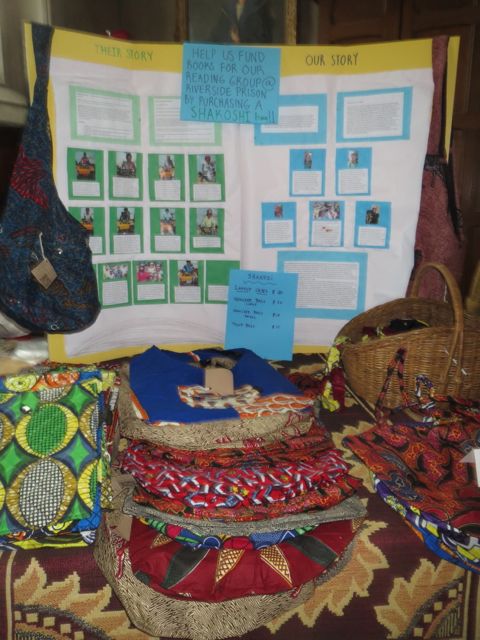Serendip is an independent site partnering with faculty at multiple colleges and universities around the world. Happy exploring!
Dutch wax fabrics, conceived ecologically....

I have to admit it, I was seriously dragging my feet on Friday. There were TOO MANY OBSTACLES. I knew that the universe was telling us to GIVE UP. By 10 am, I was certainly ready to--and I kept telling Ava and David, for the next two hours, that they were trying too hard to make something happen...
and then I was so glad that they did! (I'm also glad, aphorisnt, that you did NOT swerve--who knows what might have happened then....?!?)
I was so surprised and delighted by the Shonibare exhibit, when we finally arrived @ the Barnes Foundation: I was grabbed first by the whimsy, by the color, and also as immediately by the complex representation of colonializing educational practices. Like others, I was particularly struck by history of the Dutch wax textiles, so I did a little more reading on The Curious History of "Tribal" Prints: How the Dutch peddle Indonesian-inspired designs to West Africa. What strikes me most in this account is how "ecological" it is--that is, how demonstrative that "everything is connected," not just biologically, but culturally and commercially (really? I think there's an Econ project lurking close to the surface here: see the web site for VLISCO, which offers free delivery to Africa....).
A few lines from the Slate article, which highlight these interconnections:
“The fabrics are not really authentically African...
They prove to have a crossbred cultural background quite of their own.”
The Dutch enlisted West Africans into their army in Indonesia, where they took a liking to batik.
The manufacturing process the Dutch developed to mimic that style had a "cracklng effect"
that "didn't appeal to Indonesian batik purists," but which the West Africans were partial to;
it was also "influenced by Indian-inspired British designs."
The Dutch found their market in West Africa, but the process was intensely symbiotic:
"naming the fabrics, and using them to express certain ideas, is a way for West Africans to
claim the foreign-made cloth as their own...they are regarded by wearers in places like Togo,
Ivory Coast, and Ghana as international and cosmopolitan....who can really claim a copyright
to a design that is itself the product of so much cultural appropriation and re-appropriation?"
Like those of you who attended the Black History Month dinner, am also implicated in this chain.
During the Craft Fair held in Thomas Great Hall in November, I and some colleagues sold Shakoshi bags,
to raise money for the book group we offer in Riverside Correctional Facility.
The ecological thought, indeed.


